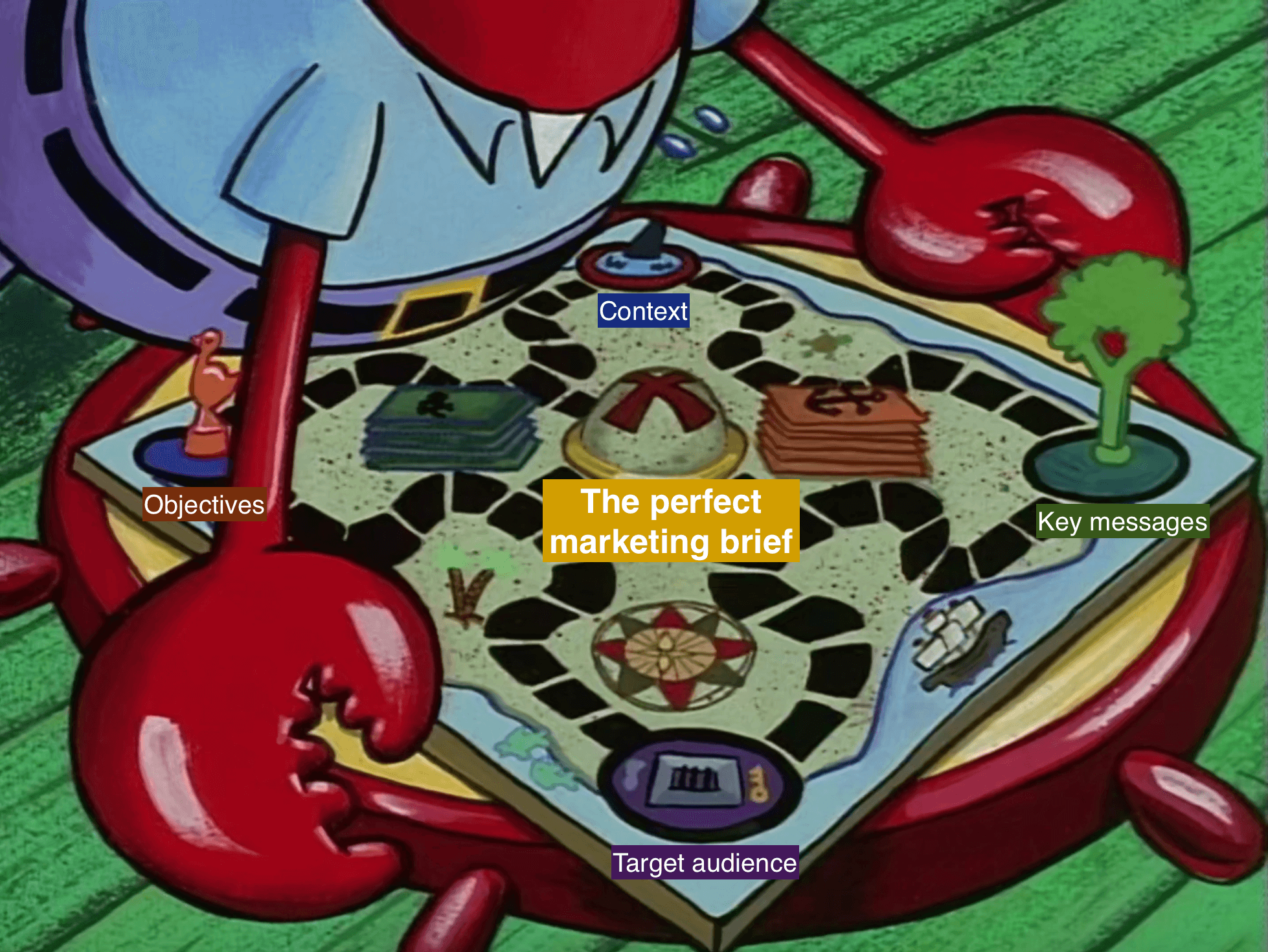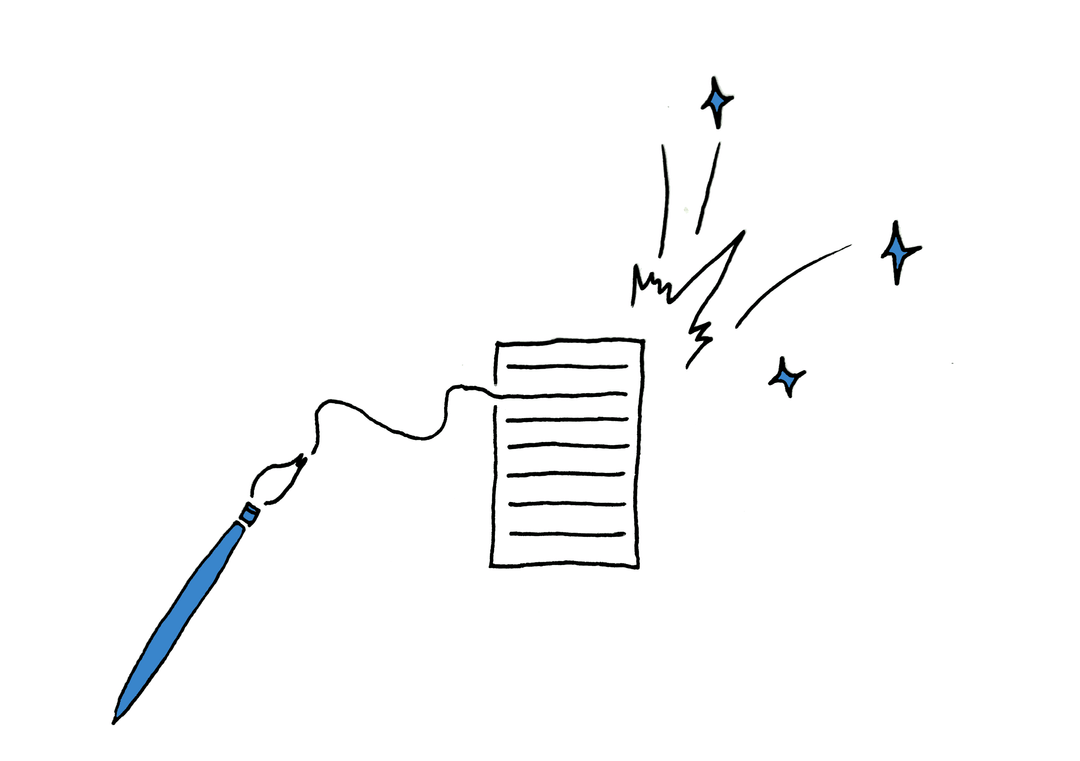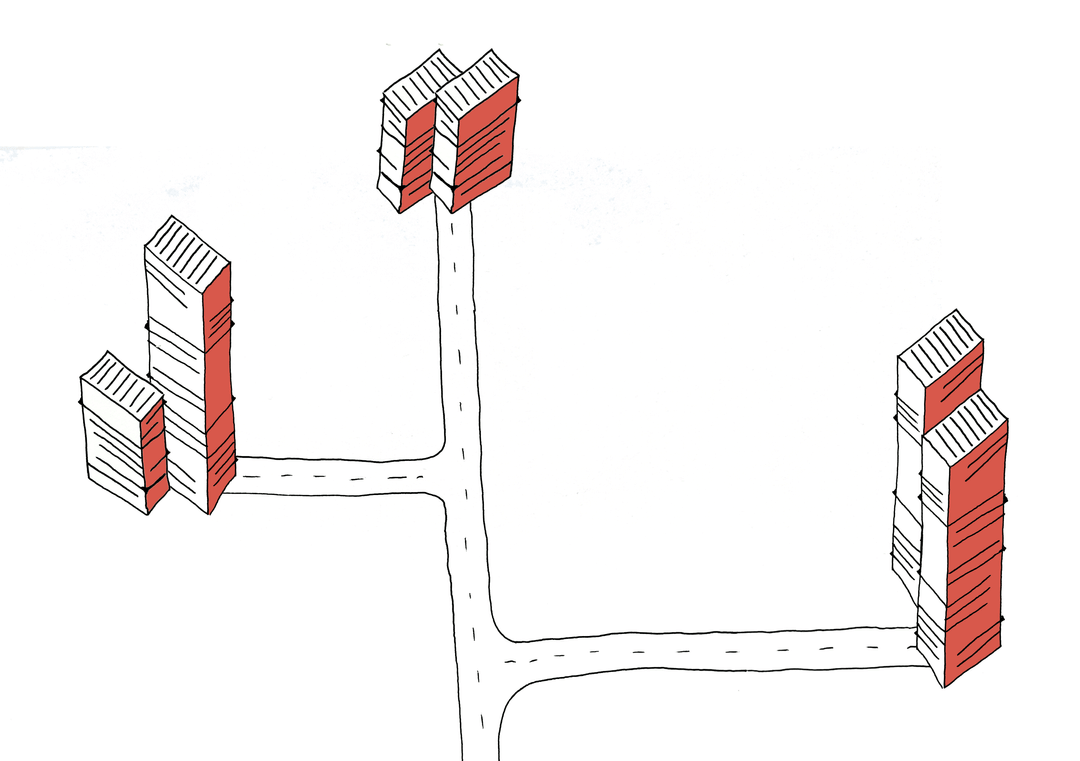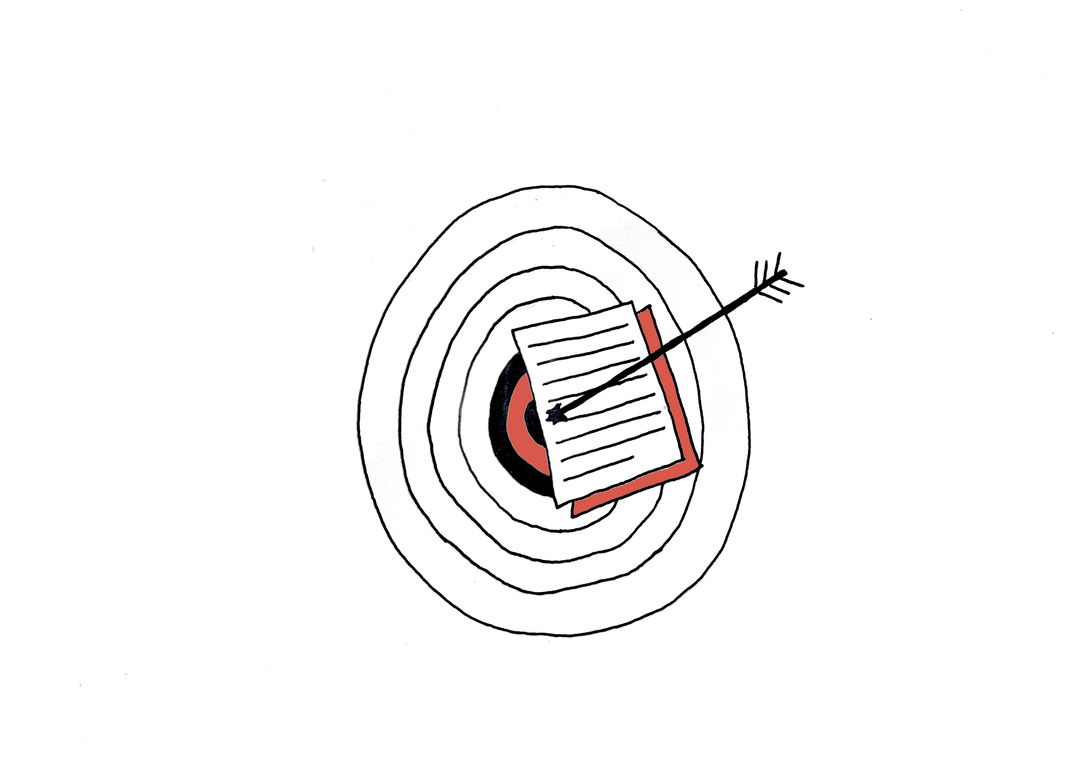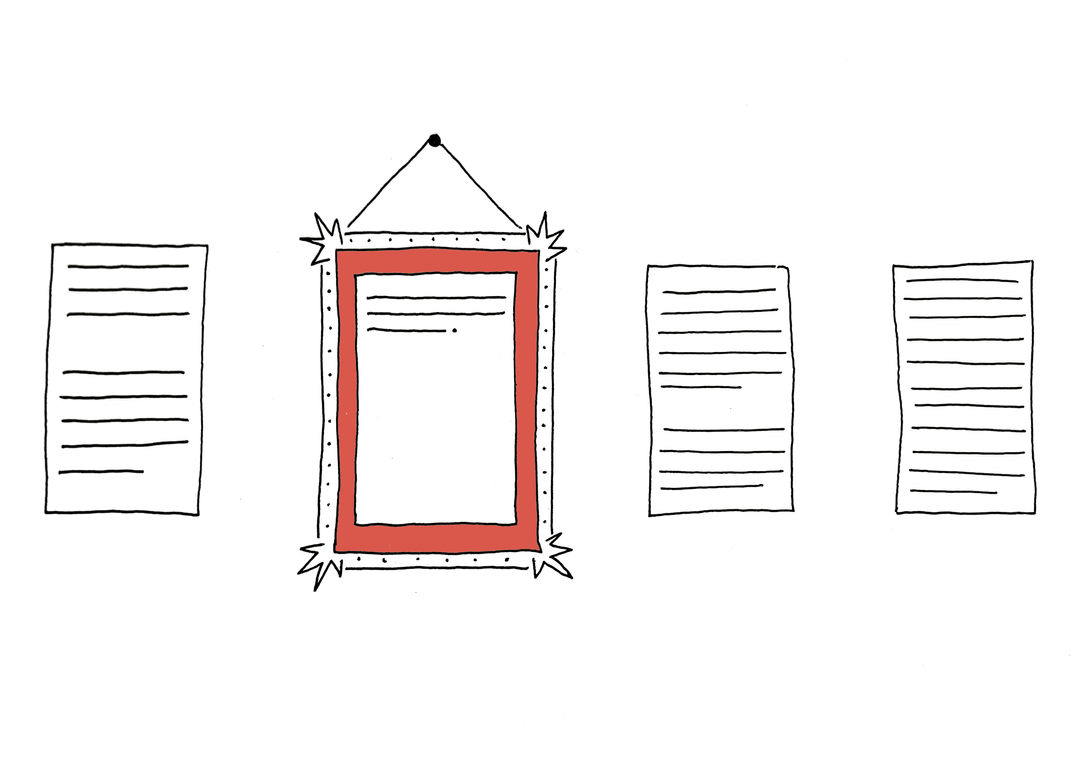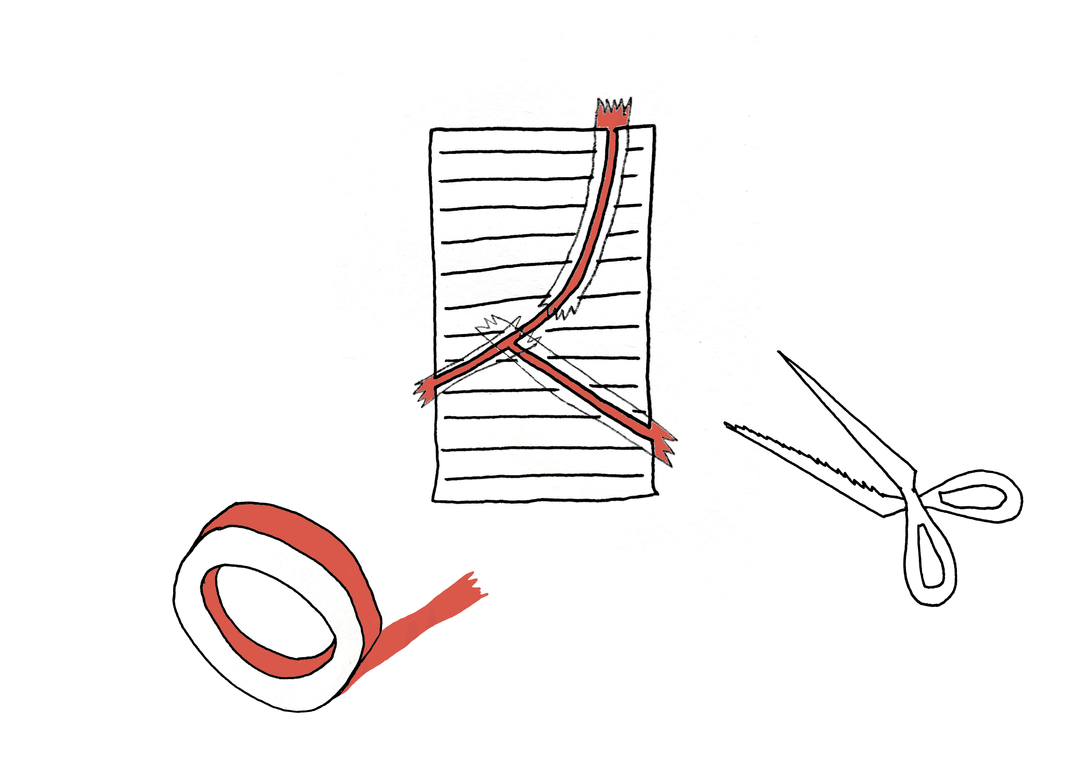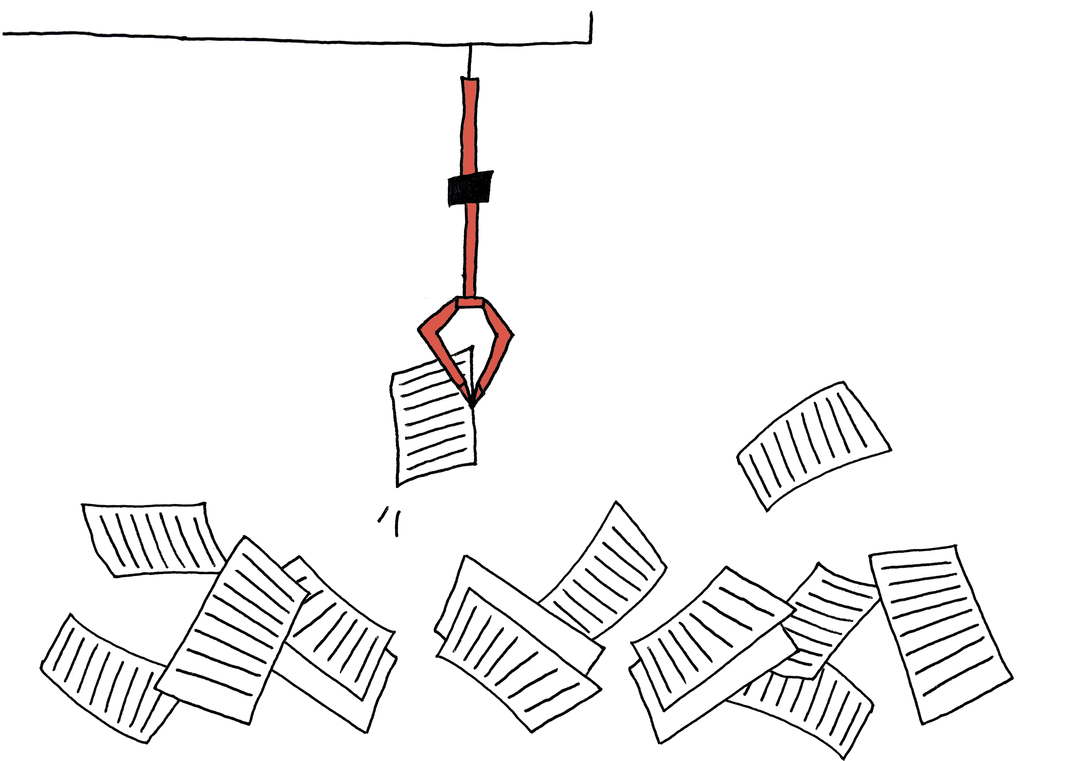The perfect marketing brief doesn't exi—
You're probably right, each agency likes to be briefed differently and each project may require a slightly different brief. But… here are the building blocks for a perfect marketing brief.
And if you follow these 10 steps, your brief will be better than 80% of other briefs.
Trust us, we've reviewed thousands. And all that knowledge powers Briefly, so you can get to standout briefs in moments.
What is a marketing brief? 😬
The marketing brief (sometimes called the client brief) is a document produced by a marketing team and given to their agency (that can be their advertising agency, their media agency, or in 2023, their influencer marketing agency).
It's the single most important document in a campaign. Think of it as a the springboard for everything that comes next.
Yeah - all that sexy creative work started with a simple piece of paper. And if you get it wrong, only pain lies ahead.
The good news: if you follow these 9 steps, you'll be on track to deliver a great brief.
What is the difference between a client brief, a marketing brief a creative brief?
A client brief is the same as a marketing brief. They're written by clients and outline a new project for their agency. If you're looking to write one of those, you're in the right place.
A creative brief is written for a creative team and is designed to direct and inspire the creative work itself. It is usually written by an agency and based on a marketing brief that the client has provided. For smaller projects or if the client is briefing a production agency or freelancer directly, they may write the creative brief themselves. If you're writing this type of brief, head over to our guide on 'How to write the perfect creative brief'.
How to write a marketing brief?
Step 0: Naming your project
Step 1: Define the problem
Step 2: Setting objectives
Step 3: Summarise the business context
Step 4: Refine your strategy
Step 4.1: Define your target audience
Step 4.2: Decide on a CTA
Step 4.3: Craft your key messages
Step 5: Inspire your agency
Step 6: Be clear on the budget
Step 7: Considerations
Step 8: Review, tweak, and finalise
Step 9: Share the brief with your agency
Step 0 - Give your project a name and choose the right template 📦
Think before you write
That's right. There's a Step 0. And it's one of the most important.
Who's this brief going to?
And how big is the project?
What kind of campaign will it lead to?
What should it be called?
Get all these clear in your mind before you start - if you don't know the answers, then you've really got to ask yourself why you are writing this brief!
Marketing brief template
Now, based on that information, get your template ready.
Brief templates are a good way to organise a lot of thinking, information and instruction.
If you don't already have a brief template, create your own (if you're brave) or choose one of our free, expertly crafted ones (if you're smart).
And when you use Briefly to write your briefs, you can easily create custom templates that will automatically draw on industry best practice for every single brief.
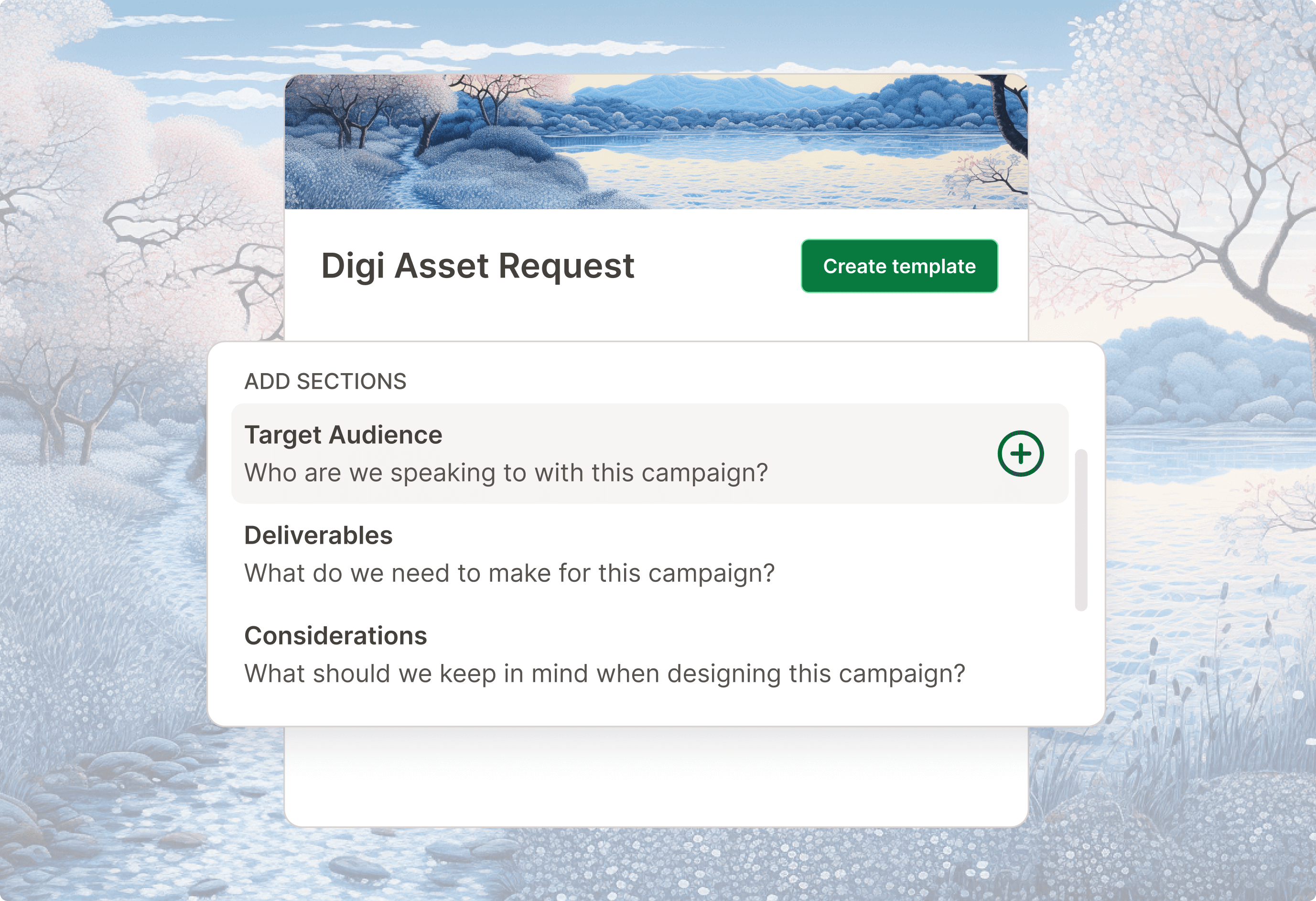
Step 1 - Define the problem you want to solve 🤨
Every good brief starts with a problem - the thing you need to solve with this campaign.
Actually, every good brief starts with three problems:
- Your business problem
What challenge is your company facing that is affecting its bottom line? This is usually to do with your sales, revenue or market share. - Your marketing problem
What are consumers doing (or not doing) that is causing that business problem? This could include things like store visits, basket sizes, purchase frequency or clicks, shares and downloads. - Your communications problem
What are consumers thinking (or not thinking) about your brand that is causing your marketing problem? This might include things like brand awareness, consideration, preference and associations.
Example:
- Business problem: Nike was losing market share amongst key audiences in London to rival brands
- Marketing problem: Young Londoners were rarely shopping with Nike, instead choosing brands that felt more relevant to them
- Communications problem: Years of putting mega-star athletes at the centre of their advertising meant young Londoners no longer felt Nike was a brand that 'understands the community I live in'.
If you're struggling here, read our guide on 'How to define your marketing challenge'.
Step 2 - Setting objectives 🎯
How will you know if your campaign has succeeded? People might love your campaign, but have they changed their behaviour or attitude when it comes to your brand?
This is where setting clear objectives comes in. They keep you on track to solve your business, marketing and communications problems.
Plus, a good agency, creative or implementation team will love clear KPIs: they keep everyone honest and accountable.
Laddered objectives
Good objectives should read like a ladder, mirroring the 3 original problems you created for this brief.
💼 Business Objective
The objective that the business as a whole is aiming at. It's usually tied to money - sales, revenue, profitability.
📈 Marketing Objective
What can you achieve with marketing that will deliver that business objective? This is usually to do with changing consumer behaviour. For instance, stopping, or starting doing something, or increasing store visits, basket sizes, clicks and shares.
📣 Communications Objective
What effect on your consumers do you need your communications to have in order to meet your marketing objective? Typically, this is to do with your consumers' attitudes and perceptions - awareness, consideration, preference, or brand associations.
SMART Objectives
And remember, good objectives are SMART objectives:
- Specific
Numbers, numbers, numbers. What percentage increase do you want to see? How many new customers do you want? Do not be vague. - Measurable
How will you know if you've met this objective? What metric are you using to measure success? Where is that metric currently and where do you need it to be? - Achievable
Is this realistic, based on the size of the brand and the campaign budget? - Relevant
Does achieving this objective put the brand in a stronger place than before? Does it align to what the brand is trying to achieve in the short, medium and long-term? - Time-Bound
How long do you have to achieve this objective?
Example:
If you were writing a brief for a dairy-alternative drink brand, your marketing objective might be…
"Increase unaided brand awareness amongst core audience (Young Coffee Aficionados) from 12% to 17% by end of Q4"
For more detail, we've put together a thorough guide on how to set the perfect objectives for your next marketing campaign.
Step 3 - Summarise the background 🌄
Time to explain the context: what does your agency, creative or implementation team need to know about why this brief exists?
There are 3 things you need to include:
- What is the brand or product this campaign will focus on?
- What is happening in the market (to your consumers or competitors) and how will this campaign respond to those changes?
- What cultural shifts are impacting your ability to sell (and which ones are tailwinds)?
Keep it short and sweet, stay focused on the problem, and avoid jargon as much as possible.
Our guide on summarising your research will help you turn hundreds of pages into snackable insights for your agency. Otherwise, extra details (like brand guidelines) and research can go in the appendix.
Step 4 - Refine your strategy 🧠
When crafting your strategy, it's important to keep your 3 original problems in mind. After all, a good strategy is simply a plan to achieve your objectives.
Of all the strategy frameworks out there, the simplest and one of the most effective for a marketing brief is Get / To / By.
- Get your target audience
- To do something that will solve your problem
- By convincing/demonstrating/encouraging/demanding/pleading/etc. that they do that thing
Example:
- Get young coffee drinkers who don't think about the type of milk they put in their coffee
- To try oat milk in their coffee
- By showing them it is the greener way to enjoy a latte.
This framework is a strategic summary of three distinct parts of your marketing brief, which we'll cover in the rest of this section:
- Your target audience
- Your CTA
- Your key messages
There is a brilliant article by Mark Pollard about how to approach strategy from an agency perspective. You don't need to do their work for them, but understanding the processes they go through can help you write a brief that gets them to stronger insights, better ideas and more effective creative work.
Step 4.1 - Define your target audience 🎯
You need to identify a clear target audience to give your campaign the best chance at resonating with a group of people. Campaigns that try to talk to everyone often speak to no one.
Before you start picking a target audience, it's useful to have a market segmentation in place. Our handy guide to segmenting your market walks you through creating one for your brand - but if you've already got a segmentation in place, then you're ready to start defining your target audience for this brief.
This might start as a demographic description, unearthed through market research, surveys, focus groups and more, including your audience's:
- Age
- Gender
- Location
- Income
- Lifestyle
- Type of job
- Hobbies and interests
But really good target audiences go a step beyond demographics - into the attitudinal and behavioural.
For example:

The first version might have more facts about the audience, but it has less useful information.
By all means include the demographic detail if you have it - there may be insights to unlock within. But as an audience definition, try to get into the heads of who you are selling to, not their government form submissions.
For more on how to identify and build a target audience for your next campaign, read our in-depth guide here.
Step 4.2 - Decide on a CTA 🏃
Get / To / By
Now that we know who we're targeting, what do we want them to feel, think and do?
Write down what your audience currently feel about the problem you've identified, what they think about your brand (or others) when it comes to solving their problem, and what they ultimately do to solve it.
Now, write down how you want all of those to change.
Staying with our example of a dairy-alternative milk brand, you might get to something that looks like this:

From here, we can summarise this into one action: Try oat milk in their coffee.
This is the seed of your campaign's CTA. Getting to this point means your agency and creative team can craft it into a compelling, simple piece of language that tells your audience what to do.
And it also gives us a clue as to how we can get them to do that…
Step 4.3 - Craft your key messages 👟
Get / To / By
How are we going to get our audience to change their behaviour?
We've got a target audience, and we've got an action we want them to take. We also know what they need to feel and think in order to take that action.
So now, we need to think about how we convince them to feel, think and do what we want - or as Oatly might put it, how do we brainwash them?
This starts in the brief with the key messages: the truths about the product or brand that are compelling enough to change someone's mind.
Key messages need to be:
🏞 Simple and jargon-free
Your creative team will need to be able to write simple, elegant and persuasive copy.
But it is your task to avoid complicating the key message they need to convey.
👉 Selective
Research from Millward Brown suggests there is a limit to how many messages someone can remember from a single ad.
That number is about 2 (sometimes it's 1, sometimes it's 3, but beyond that, people start forgetting what you are talking about at all).
🔎 Specific to each audience (if necessary)
If you have multiple audiences, or if there are meaningful segmentations within your audience, you might find that different things about your brand or product appeal to different people. In this case, plan the right message against the right segment - and avoid trying to say everything to everyone.
Those are some quick tips to get to some great key messages in your next brief. But we've also got a whole article on this topic: check it out to start really crafting your key messages.
Step 5 - Inspire your agency 💡
You've gone deep into the weeds of your campaign by now. Time to lift your head up again.
Are there any campaigns you love that did something similar? Or any that you hate?
Did they speak to a similar audience, or try to change people's minds about a similar product?
Challenge your agency to do better, and set them ambitious but realistic benchmarks about the quality of work you want.
Briefly automatically populates every brief review with relevant, award-winning campaign case studies, but you could find inspiration from anywhere.
For our fake brief about young coffee drinkers, you could include this spectacular campaign from IKEA, which focuses on showing people how the small things they do everyday with IKEA's products can add up to something wonderful for the planet.
There are lots of ways to make a brief more inspiring. Case studies are just one - read about the rest in our handy article.
Step 6 - Be clear on the budget 💸
Money matters. Your budget can be one of the last things to be confirmed in the timeline of the project, but it is the most important. If you know how much budget you have allocated to this campaign, make it crystal clear.
Even if indicative, a budget will help an agency to size the creative challenge. Without this, they may well produce an idea that works great for a $5m media budget but will fail hopelessly for your $15k tactical campaign. The last few weeks of the project will be spent trying in vain to right-size the existing ideas to fit this new project scope.
Step 7 - Lock down the considerations 🔒
Brilliant basics, amazing admin, flabbergasting fundamentals - whatever you call it, let's get it sorted.
Make sure you've got the following:
- Considerations
What do you need to say in this campaign? What can you definitely not say? What needs to be in the campaign to avoid your CMO throwing a fit? - RACI
Who is Responsible, Accountable, Consulted, and Informed on this project? In other words, who are the key stakeholders? - Next Steps
What do you expect to see, and when do you expect to see it? - Timings and deadlines
What are the campaign live dates? When do you need asset supply to meet your media booking? (If you have a media agency, they'll handle this for you.) - List of deliverables
What assets do you actually need to create? Give the channels, formats and number of assets that you're expecting.
There's lots of detail you need to sift through here, but it's important that you get it right. Take a look at our in-depth checklist for you to work through in our article on the topic here.
Step 8 - Step back and admire your work 😇
We'd allot maybe 10 minutes for this.
Stare at your brief, smile at the insight you've brought to your core audience, frown as you fix a small typo, and smile again as you feel like your brief has come together as a tight, consistent document that can lead to some outstanding work.
You can also use AskBriefly to quickly make edits or tweaks - everything from changing the style or tone of your writing, to adding fresh insights to your audience descriptions.
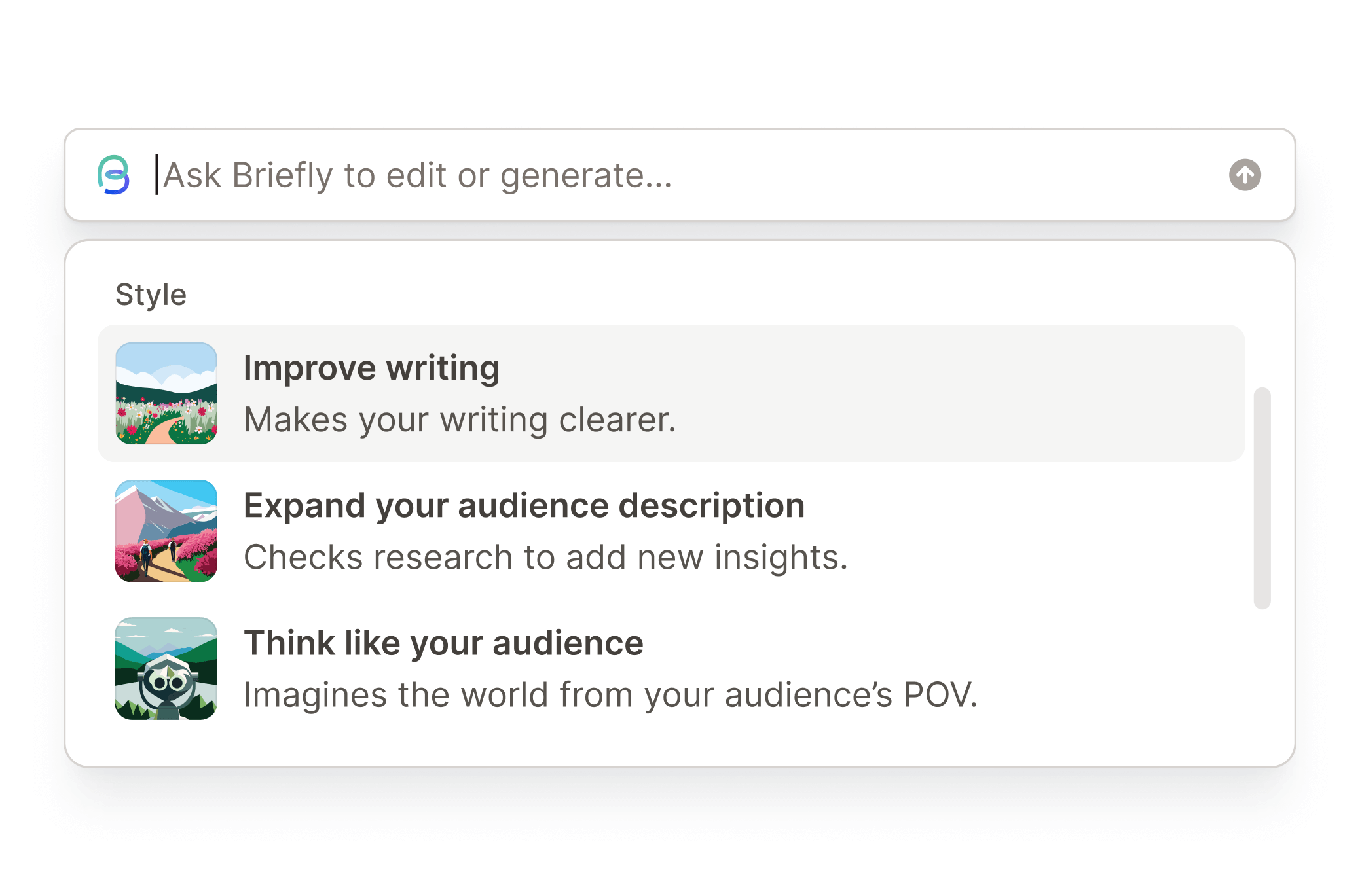
Step 9 - Get sign offs and share on with your agency 📤
Send all the regular emails asking for feedback or reviews, organise the meetings and brief your agency.
Get your agency or team together (ideally in person, but Zoom will work fine as a back-up).
Get them as excited as you are - Business As Usual campaigns deserve the same kind of love, creativity, flair and insight as brand relaunches.
If you need some inspiration, we've put together a few tips on how to make your next briefing more inspiring than any you've delivered before.
That's all it takes to craft the perfect marketing brief. And so begins the next chapter - the creative process...
Of course, if you want to make writing a great brief easy, you can always try Briefly 🌱



